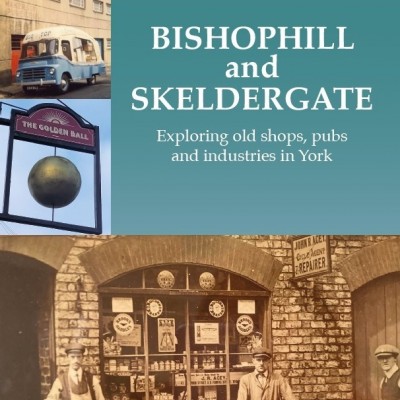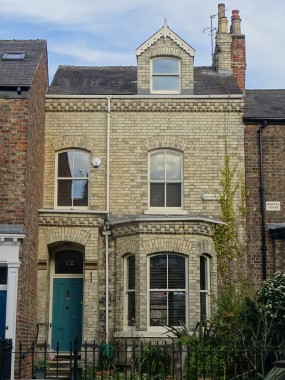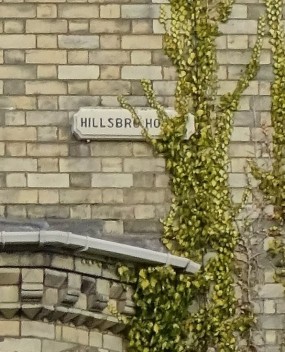16th August 2021
The Dimmey family of York over 200 years
Dick Hunter has written a blog post featuring researches by our member Catherine Sotheran, into a York family with a long history of craft working
Catherine Sotheran's research reveals the local Dimmey family over 200 years, with many links to the Nunnery Lane area. Here we explore the work of the family over this period, and assesses their contribution to the economic life of York. We've used sources including census returns, birth, marriage and death registers, newspapers, probate records, Ordnance Survey maps and York Cemetery records.
The name Dimmey had earlier spellings – Dimier, Deme, Demy and Demmy – before settling as Dimmey. The earliest reference is to a Thomas Dimier, from Savoy in France. The Dimmeys that we follow – like many small craftsmen and traders – are Freemen of the City of York, with important rights going back to the Middle Ages. They could 'exercise a trade in the city' and, along with property owners, vote in parliamentary elections.
Trade guilds controlled admission of craftsmen and merchants and approved standards and quality of merchandise of their members, with fines imposed on those who did not abide by the required standard. Guilds set out terms of apprenticeship and tested those wishing to enter a trade. Entrance to guilds was by serving an apprenticeship with a Freeman Master Craftsman, or by birthright if the father or grandfather was a Freeman. However, the Municipal Reform Act of 1835 removed many of their powers and exposed the running of the city to a wider range of people. Freeman remained an honourable title and the Dimmeys were proud to claim it as their birth right through patrimony.
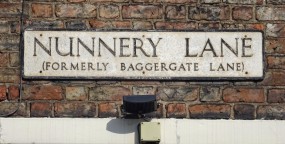 A thread in the Dimmey story is the occupation of joiner, which features in six generations. The first reference is on 3 November 1794, when Thomas was apprenticed to George Newlove, a joiner of Minster Yard. In 1804 Thomas married Mary Pearson at St Mary Bishophill Senior, and by 1814 had acquired land on Baggergate Lane (now Nunnery Lane), on which they built two houses, the exact location is unknown.
A thread in the Dimmey story is the occupation of joiner, which features in six generations. The first reference is on 3 November 1794, when Thomas was apprenticed to George Newlove, a joiner of Minster Yard. In 1804 Thomas married Mary Pearson at St Mary Bishophill Senior, and by 1814 had acquired land on Baggergate Lane (now Nunnery Lane), on which they built two houses, the exact location is unknown.
They had five children, with two sons apprenticed to their father, along with their cousin Jonas Dobson. One daughter married a joiner, another a cabinet maker. In 1841 Thomas senior and Thomas junior lived in adjoining houses in Dale Street. In 1861 Thomas junior is a master joiner, and the 1871 census reveals he employs three men and a boy. Six years later he is advertising - to let - a joiner's shop (with shed below), and a three-stalled stable and harness room with hay chamber in Fenwick Street, off Bishopthorpe Road. The 1881 census records him still a joiner, but then employing only two men. He had acquired – perhaps built - the nine-roomed Hillsbro' House on Bishopthorpe Road, which he sought to sell or let.
Thomas junior's son William was also a joiner. In 1871 and 1881 he and his wife Ann were at 7 Victoria Street, off Nunnery Lane, and in 1891 at 10 Scarcroft Road, William a joiner / undertaker. White's 1895 Directory of York notes he was a joiner, builder and undertaker with premises in Dale Street, but his residence was still 10 Scarcroft Road. Thomas and William Dimmey were registered undertakers, the family firm responsible for some 880 funerals at York Cemetery between 1840 and 1927, with premises at 58 Walmgate in 1895. William's son Thomas Henry - born in 1872 – was also recorded as apprenticed to a joiner in the 1891 census.
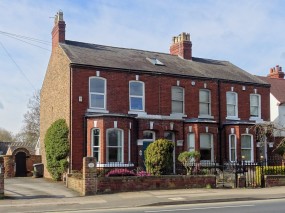 In conclusion, the Dimmeys have over several centuries made a substantial contribution to the life of the city as builders, joiners and undertakers. An example of their role as builders is Dimmey Buildings in Swann Street (demolished) and presumably the block of three houses on Tadcaster Road, the house on the left, now 108, was called Dimier House.
In conclusion, the Dimmeys have over several centuries made a substantial contribution to the life of the city as builders, joiners and undertakers. An example of their role as builders is Dimmey Buildings in Swann Street (demolished) and presumably the block of three houses on Tadcaster Road, the house on the left, now 108, was called Dimier House.
The Dimmeys have lived and worked in many streets in St Mary Bishophill Junior and Senior parishes including Dale Street, Fenwick Street, Scarcroft Road and Swann Street. Catherine's fuller notes about the family are here.

